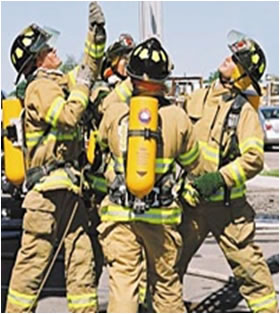A World-Class Fire and Explosions Hazard Management Service Provider
Fire-Bow FEHM Project Involvement
- Scenario Based FEHM Review.
- ABS Group Fire Risk Assessment.
- FIREPRAN.
- Fire System Specification.
- Fire Vehicle Specification.
- Fire Brigade Resource Specification.
- Fire Brigade Studies.
- Fire And Evacuation Training.
- Fire Brigade Competency Assessment.
Aviation Fire Risk Management
- Aviation Fire Resource Assessment.
- Aviation Fire Risk Management.
- Airport Fire Brigade Resource Assessment.
- Emergency Response and Training.
- Aircraft Fire And Rescue Training.
- Brigade Competence Assessment.
- Equipment Specification to ICAO.
Fire-Bow Emergency Response And On-Site Co-ord’ Activities

- Seminars and regional exercises for clients.
- Working Groups on special themes.
- Stand-by capacity available nationwide for sudden on-set disaster.
- Immediate deployment call-off arrangement (12 - 24 hours)
- On-site coordination in first phase of disaster.
- Coordination/Assessment/Processing information for clients.
- Facilitate/broker information exchange (int. and national relief actors).
- Coordination platform (joint operations planning for international responders).
- Facilitate logistics support for responders in cooperation with local authorities.
- Emergency Communications, support services for Disaster field operations.
- Specialized training activities and support to training events/exercises.
- Map-Action: on-site mapping services during disaster.
- Orientation material for responders – maps
Civil-Military Coordination
- Civil-Military coordination in humanitarian crises/natural disasters.
- Training and deployment of CM Coordinators.
- Policy, standards development.
- Liaison with Agencies, government and providers on CM Coord issues.
- Development of Emergency guidelines for use of civil-military assets during emergencies (utilizing the best-practice Guidelines e.g Oslo).
- Military and Civil Defence Assets (MCDA) Registry.
- Joint exercises planning for the civil/military.
Fire Safety & Firefighting Equipment Integrity
Our Equipment Maintenance Management Strategy
Fire-Bow has in-house expertise to manage and maintain client’s Fixed Fire Protection Systems, mobile and ancilliary equipment pool. At Fire-Bow, we use NFPA and best-practice methodologies technical , purpose designed technical forms and documents to plan and maintain your Fire safety assets.
- Management of preventive maintenance for clients.
- Planning with automatic alerts, using a drag and drop-style calendar.
- Maintenance requests (made by clients) met with Corrective Job Orders (Maintenance) with constant feedback of the request status.
- Provide Clients full maintenance history (per equipment, by location, cost centre, etc.)
- Weekly, monthly, quarterly (etc.) analyses and reports to show clients – enabling our Technicians to easily report the work done.
Main Advantages of Using Fire-Bow to Meet Your Fire Equipment Maintenance Needs!
We ensure thorough maintenance planning. Our maintenance technician are top-end highly trained and competent to carry out maintenance in line with NFPA, ISO, API, ANSI etc and international best-practice requirement.
Out technicians are fully trained to save a lot of time with quick access to all the information of its customers’ equipment in each of its facilities: datasheets, documentation, planned work, maintenance history, parts used, etc.
The timely planning of maintenance work and thus increase the availability of its customers’ equipment and increase the productivity of their maintenance teams on the ground.
Our maintenance philosophy is to quickly respond to maintenance requests by customers and ensure that response times are measured and are within what was contracted with the client (SLAs);
To accumulate maintenance history and produce information that allows the customer himself to make better technical decisions that reduce their costs and increase equipment efficiency in facilities.
To produce monthly or quarterly reports that add value: providing analysis, indicators, trends and suggestions for improvement to the customer.
The timely planning of parts necessary for maintenance, ensuring their availability in stock and automatic alerts should more need to be bought, avoiding delays in work due to stock shortages.
